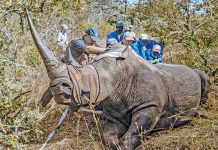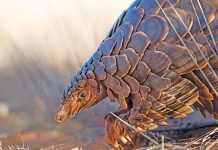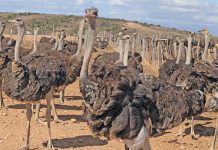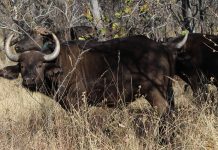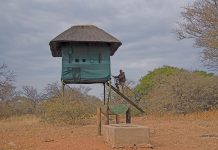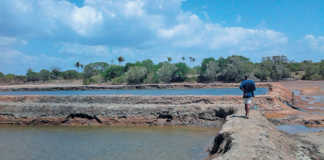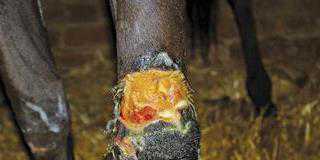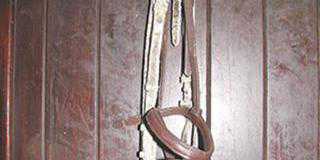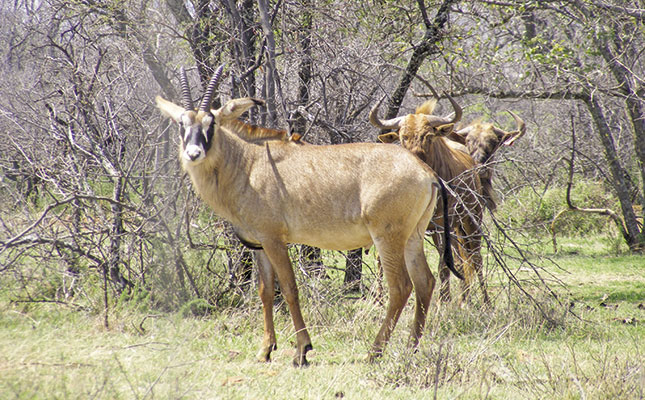
Photo: Annelie Coleman
Colin and Marisa Engelbrecht of Klein Buisfontein Ranch took over an operational cattle farm 11 years ago. By using the best genetics available to breed certain predator species and several selected colour variants of some antelope, they are successfully breeding high-value game species.
READ: Cattle farmers learn how to farm game
“The South African game industry is based on the four pillars of breeding, hunting, ecotourism and game meat production,” Colin says. “At present, we’re primarily a game- breeding facility with selective hunting of surplus animals. We’re also in the process of developing a tourism facility to diversify our business.”
On Klein Buisfontein Ranch, situated near Hartbeesfontein in North West, the Engelbrechts are breeding high-value game species on 500ha of mixed bushveld with rocky, sandy soils. These high-value game species are:
- Buffalo;
- Sable antelope;
- Roan antelope,
- ‘Black’ and ‘Saddleback’ impala (selected colour variants of Aepyceros melampus);
- ‘Golden oryx’ (selected colour variants of the gemsbok Oryx gazella);
- Nyala;
- ‘Golden’ and ‘Golden King’ wildebeest (selected colour variants of the blue wildebeest Connochaetes taurinus);
- Tsessebe;
- ‘Yellow blesbok’ (selected colour variant of Damaliscus dorcas phillipsi);
- ‘White’, ‘Black’ and ‘Copper’ springbok (selected colour variants of Antidorcas marsupialis).
They also breed 10 other antelope species including impala, blesbok and giraffe. Predators (of which some are colour variants) include black leopard, black jaguar, cheetah, white lion, Bengal tiger and serval.
The Engelbrechts breed predators to sell to other game ranches and contribute to their long-term survival, since their numbers are declining drastically every year, says Marisa.
A law graduate, she bade farewell to the corporate world to concentrate on the predator breeding programme.
“By keeping and breeding them in a camp system and enclosures we can monitor them closely and detect illness and disease almost immediately,” she explains.

Marisa and Colin Engelbrecht with their sons Kyle (left) and Darren. Kyle is holding a white lion cub.
Structure and infrastructure required for breeding high-value game species
Klein Buisfontein Ranch consists of six camps ranging from 25ha to 50ha. Each camp has its own watering point supplied from boreholes. The remainder of the farm is undivided.
The camp system simplifies the management of high-value game species. The camps are used only for breeding, while larger species, such as sable, are paired with smaller species such as
springbok to diversify grazing.
Camps are structured according to the needs and requirements of each high-value game species, whether they are browsers or grazers.
The vegetation on the rocky soils consists of mixed bushveld vegetation with woody species such as buffalo thorn (Ziziphus mucronata), sweet thorn (Acacia karroo) and white stinkwood (Celtis africana). Grass species include red grass (Themeda triandra) and Smuts finger grass (Digitaria eriantha).
Around 6ha of irrigated lucerne and 50ha of dryland Smuts finger grass provides additional winter feed. The annual rainfall is between 400mm and 600mm. Temperatures vary from below freezing in winter to the high 30s in summer.
Converting Klein Buisfontein Ranch from a cattle farm to its present use called for a great deal of infrastructural development.
“There was virtually no infrastructure for game breeding,” Marisa recalls.
“The rocky terrain was the biggest challenge. We had to build 60km of roads, erect 30km of fencing, lay 15km of water and build watering points of brick and mortar. It was costly. Any prospective intensive game breeder must carefully consider the options. Fencing costs around R75 000/km and building about R5 000/squared metred. Nevertheless, the return on investment in game breeding constantly exceeds that of livestock production.”
Colin and Marisa completed the initial infrastructure in about six months, and the camp system is based on an ecological study by Ekofocus Wildlife Services.
Ecologically sound planning ensures long-term sustainability, according to Colin, and infrastructure continues to be expanded. He explains that, as with any farm, their high-value game operation requires ongoing housekeeping.
“It’s easier to buy a tin of rust prevention paint than to replace a rusted fence pole,” he says. “We keep constant track of what must be done and tend to it immediately. Procrastination costs money.”
Klein Buisfontein Ranch employs eight permanent and six temporary workers, all of whom are trained in all aspects of the operation. These include care, feeding, carcass processing, and health and safety – vitally important when working with dangerous animals such as buffalo and carnivores.
Disease control and nutrition
Parasite control is a major challenge on the ranch. A Tickoff system in a small enclosure – to which the animals are attracted through the use feed – in each camp helps to control ticks by automatically applying acaricide such as Amipor or Deadline according to the animal’s weight as soon as it enters the enclosure.
READ: Game ranching: new laws needed
A strict inoculation programme is followed, with animals inoculated against anthrax, botulism, and blackleg, among others. Inoculants are administered via a dispensable drop-off dart. Additional feed is supplied in winter.
Except for the feed used to attract the animals to the Tickoff systems, no additional feed is supplied in summer. A phosphate lick is supplied in summer and a protein lick in winter.
An animal nutritionist formulates feed rations using lucerne, Smuts finger grass, maize, phosphate, molasses and trace elements.
The ration is mixed and supplied daily according to the species’ average bodyweight. For example, a 3,5kg ration is supplied for buffalo and a 0,5kg ration for springbok.
On-going bush clearing
An extensive bush encroachment control programme aimed at common guarri (Euclea undulata), velvet raisin (Grewia flava) and alien vegetation, conducted by applying the hormone-based arboricide Molopo, has proved to be highly effective. Brushoff 250, a water-dispersible granular crop herbicide, controls certain broad-leaved weeds and invader weeds.
A total of 50ha of bush remains to be eradicated. Although application by hand is labour-intensive and time-consuming, mechanical eradication is too expensive. Some areas are deliberately left uncleared to return nutrients to the soil by decomposition.
A mixture of Bromacil 800, a suspension concentrate with long residual action as a soil herbicide, and Roundup is applied along the fences every two years. The Bromacil 800 is sprayed with a knapsack sprayer at a rate of 1,5kg/ha to control alien vegetation such as milkweed (Gomphocarpus physocarpus) and prickly pear (Opuntia ficus-indica).
Removing alien vegetation and combating bush encroachment has increased the carrying capacity of the farm to such an extent that buffalo can be stocked at 7ha/MLU and roan, sable and wildebeest at 3ha/MLU.
“The land was used for livestock farming and was terribly overgrazed,” Colin recalls.
“Previously, stocking rates were between 10ha/MLU and 6ha/MLU.”
Stocking rates, according to carrying capacity and the habitual and dietary requirements of the species, was determined with the help of an ecologist. Species composition, as well as the social and spatial needs of the animals were also considered.
Not ‘unnatural’
“Colour variations in game animals occur naturally but are extremely rare. They are thus not solely the result of selective breeding programmes,” Colin explains.
“Wildlife Ranching SA has accepted the definition of a colour variant as ‘a functionally efficient wild animal that occurs naturally in the wild or an extensive wildlife system’.”
He says that a colour variant has a distinct phenotypic difference (colour and/or pattern) and is genetically similar to the original species, with just a few genes that cause a deviation from the normal colour. Colour variants exist worldwide among many species, such as black jaguars and black leopards.
According to Colin, anecdotal evidence suggests that in the past colour variants were hunted due to their ‘abnormal’ appearance, reducing the frequency of this gene within the species. Today, game breeders are establishing breeding projects to rectify the situation, he says.
The future of SA game ranching
The Engelbrechts foresee a bright future for game ranching in South Africa. It makes a considerable contribution to the economy and food security, contributing almost R20 billion to the GDP as well as nearly 100 000t of meat a year.
According to Colin, buffalo, sable and roan antelope should form the basis of any high-value game breeding enterprise. These animals are sought after for breeding purposes and offer exceptional hunting value. Marisa adds that nyala are a good option for new breeders.
“Nyala is highly sought- after, with an excellent return on investment. They can still be obtained at a reasonable price, with a bull currently costing upwards of R20 000.”
According to her, sable antelope, roan antelope and buffalo prices remain relatively constant. The average heifer price is currently around R250 000 for sable, R300 000 for roan and R350 000 for buffalo. Colin says that legislation to legalise the trade of rhino horn is urgently needed, as not doing so will be devastating for the animal’s survival.
READ: The York family & Breeding Golden Wildebeest
“Policymakers must address current legislation affecting the game industry,” he says.
“In SA, each of the nine provinces has its own nature conservation authority, ordinance and regulations. This impacts on our business. We need uniform legislation across the provinces.
“Wildlife ranches and breeding facilities positively contribute to conservation. The industry’s contribution to biodiversity is immense.”
Phone Colin or Marisa Engelbrecht on 072 614 6959 or email [email protected]. For more information, visit www.kleinbuisfontein.co.za.
This article was originally published in the 23 October 2015 issue of Farmer’s Weekly.

